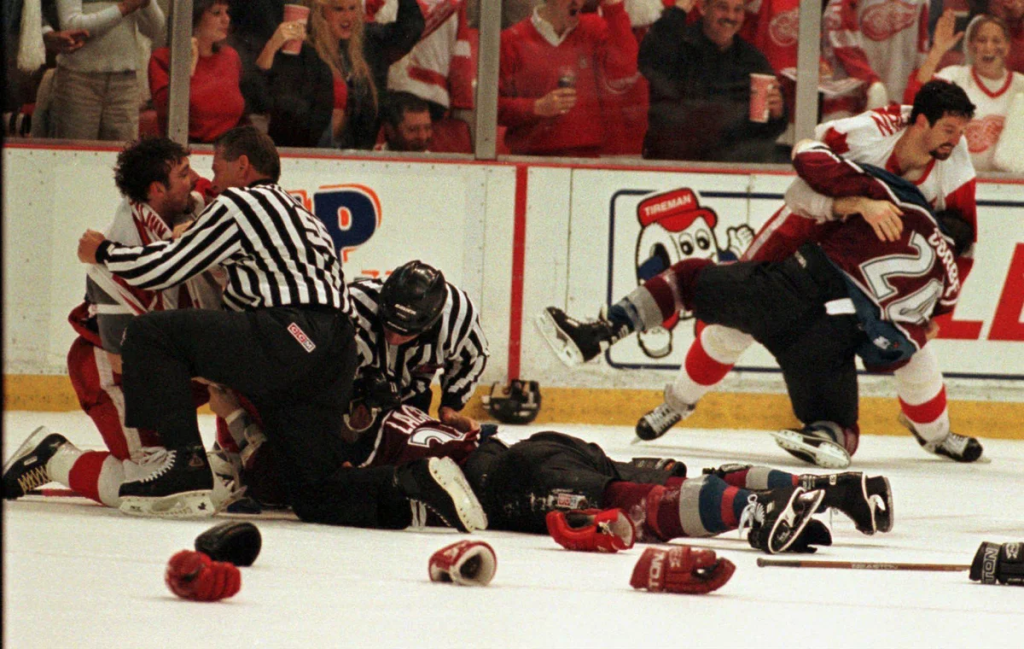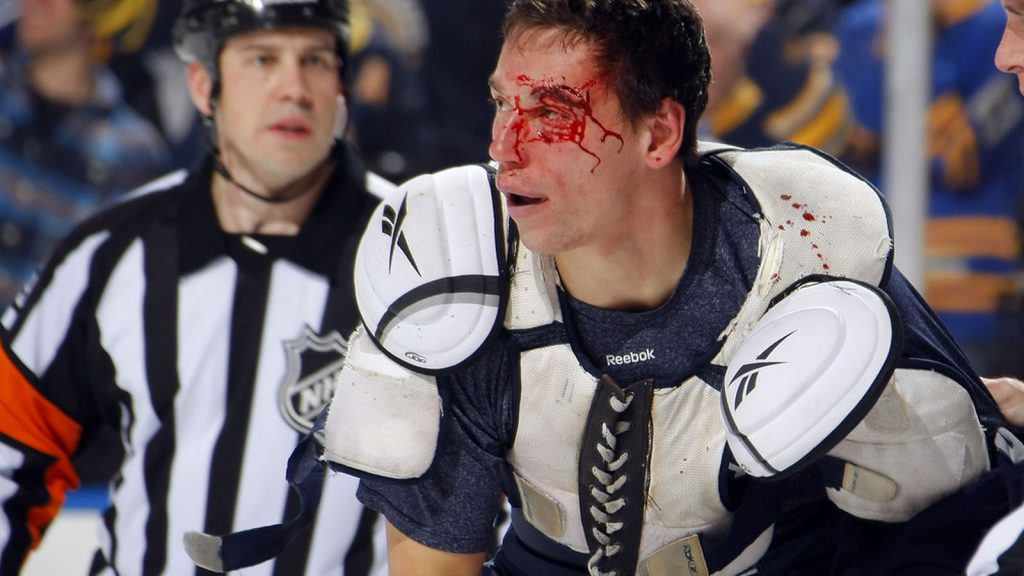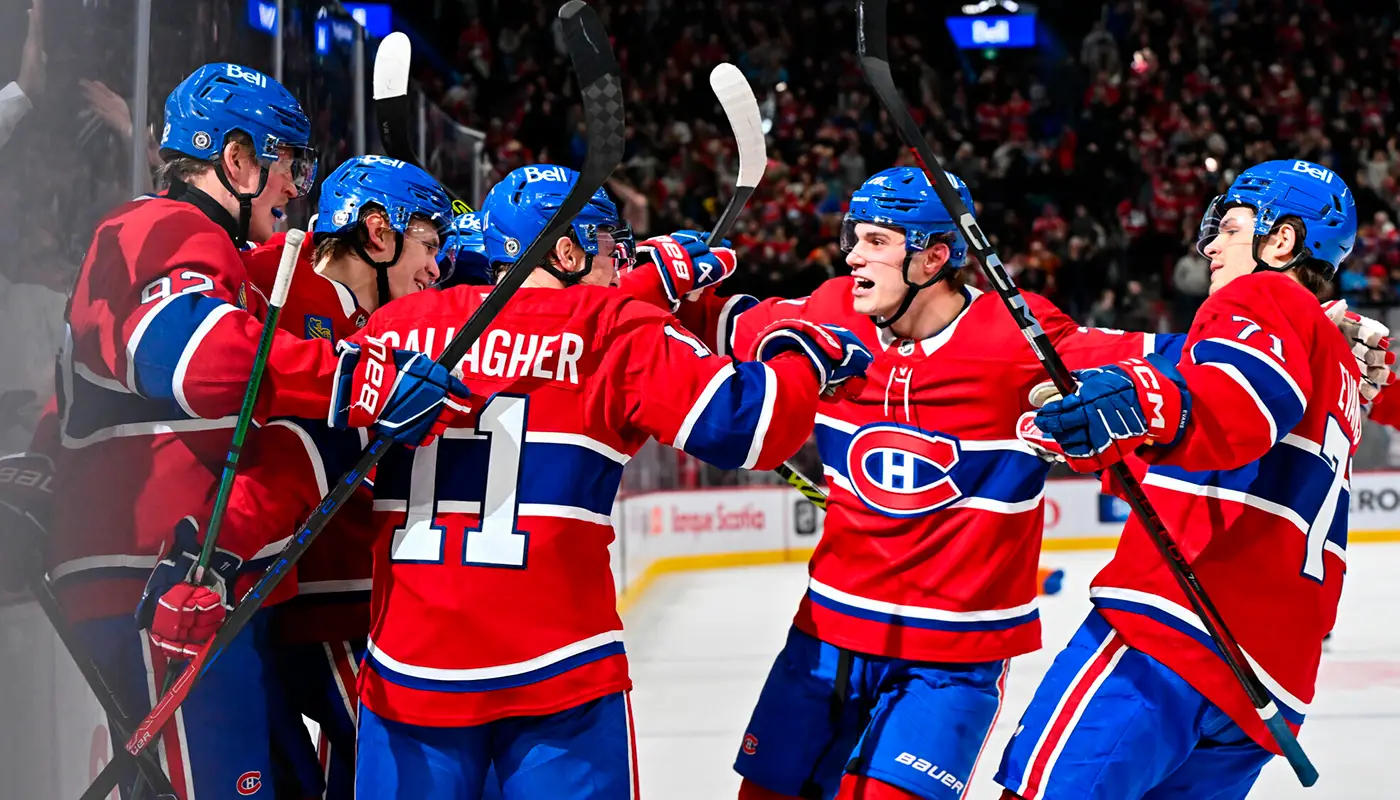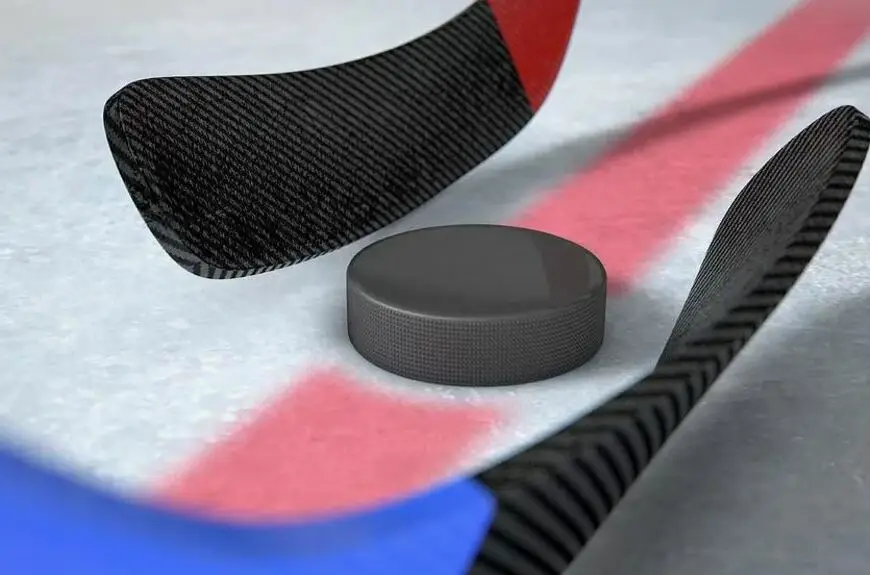Dense physical contact in hockey is not a side effect but a constructive element of the game. A 60×30 meter rink, bordered by boards, creates a closed space where player concentration exceeds any other game discipline. At speeds over 40 km/h and constant pace changes, provocation becomes part of the script. Why fights are allowed in hockey – because it is an integral form of emotional and tactical discharge.
Collisions near the goal, pushes along the boards, stick hits to the hands and torso – all contribute to tension buildup. The game requires an outlet for emotions, but in a structured form. Allowing fights is a controlled way to release steam before tension escalates into dangerous aggression. The penalty system – from minor to disciplinary – serves a regulatory function: it allows fighting but limits excessive violence.

The “enforcer” institution and team psychology: why fights are allowed in hockey
The National Hockey League (NHL) teams, as well as certain European leagues, including elite clubs like Lisboa Wolves, Almada Ice Bears, FC Porto Hoquei, systematically include players with a strong physical presence in their lineup. These players may not possess outstanding skills but play a key role in protecting their teammates.
Why fights are allowed in hockey – because a power player or enforcer neutralizes the opponent’s roughness not through discussions with the referee but through a personal challenge. The team perceives this act not as hooliganism but as an act of solidarity. In such conflicts, internal cohesion of the team is formed, trust in the captain is built, and loyalty to the coaching staff is reinforced. The fight serves as a symbol: they fight for the team in a literal sense.
Arbitration and regulations: controlling the physical aspect
 Federations (including IIHF, NHL, KHL, Portuguese FPHP) do not encourage excessive violence but allow a means to contain chaos. The reason why fights are allowed in hockey is a legally formalized part of the sports protocol. In most cases, referees do not intervene in the fight until players hit the ice or third parties get involved. After the fight, each participant receives a 5-minute penalty – a “major penalty.”
Federations (including IIHF, NHL, KHL, Portuguese FPHP) do not encourage excessive violence but allow a means to contain chaos. The reason why fights are allowed in hockey is a legally formalized part of the sports protocol. In most cases, referees do not intervene in the fight until players hit the ice or third parties get involved. After the fight, each participant receives a 5-minute penalty – a “major penalty.”
Formally, fighting is a violation. However, in practice, it is permitted if players adhere to the “unwritten rules”: one-on-one, no hits to a player in a prone position, with mutual consent to engage. In 2022, the Hóquei Total league recorded 38 collision incidents during the season, of which only 4 resulted in disqualification.
History: from Canada to Portugal
In 1904, the Canadian Federal Amateur Hockey League recorded the first official fight resulting in the ejection of two players. Since then, the penalty system has evolved, but the right to fight has remained. In the 1970s-80s, ice hockey in the USA and Canada cultivated the “goon era” – players whose sole task was physical protection.
Why fights are allowed in hockey – because the tradition is ingrained in the genetic code of the sport. In Portugal, for example, the ice hockey culture emerged later, in the 1990s, and adapted the Canadian model: rules mirror North American standards, including the right to fight in case of provocation. Fights are prohibited in youth leagues but are retained at the senior level.
Show business economics: why fights are allowed in hockey
The sport actively monetizes conflicts. The reason why fights are allowed in hockey – the audience pays for the drama. On average, one fight in the NHL increases match viewership by 17%, and fight highlights gather up to 4.5 million interactions on YouTube. During the Colorado Avalanche vs. Minnesota Wild match in 2023, a fight in the 34th minute caused a sharp spike in online engagement on ESPN+ (plus 312,000 within 10 minutes).
In 2024, Hoquei TV integrated split-screen broadcasting, allowing viewers to replay conflicts, resulting in a 26% increase in engagement. A fight is a directorial tool, not a mistake. It raises emotional intensity and turns hockey into a narrative, not just statistics.
Behavioral psychology and restraint
A player aware of potential conflict is less likely to provoke. The reason why fights are allowed in hockey lies in their intimidation effect. This concept, known in behavioral economics as “costly signaling,” demonstrates readiness to respond. Even without an actual fight, the presence of an enforcer reduces violations in the opposing team by 23%.
Sport academies’ psychologists, such as Academia Luso Ice, introduce aggression management training. Players learn emotional control but also practice fighting as a discipline. In 2023, the Porto Firestorm club introduced a separate training block on safe helmeted fighting, using soft gloves and fall simulators.
Types of fights
Allowed fights in hockey are categorized into specific types, each with a unique purpose:
- Ritualistic – preseason or initial matches establishing dominance on the ice.
- Teammate protection – an immediate response to roughness against a leader or goalie.
- Tension release – after a series of provocations or disputed referee decisions.
- Provocative – an attempt to unsettle the opponent and gain a numerical advantage.
- Response to defeat – aggression in the final moments of a lost match as a form of internal balance restoration.
Each type of fight is reviewed by the coaching staff in video analysis and assessed in terms of benefit or harm to the team.

Professional opinions: coaches, managers, analysts
Lisboa Wolves head coach Nunu Areal explained in an interview with Liga Hóquei: “Physical confrontation creates an emotional texture in the match. Remove the right to fight – and you get a sterile simulator.” Analysts from Hóquei+, a digital game analysis platform, conducted a study: in matches without any collisions, the level of penalties for rough play increases by 38%, and the number of injuries by 22%. Why fights are allowed in hockey – because players, teams, coaches, and spectators view fighting as a component of balance, not a system failure. Excluding this element would disrupt the very communication model in the game.
Conclusion
 Allowing fights is not a concession but a precise tool. It fits into team strategies, player discipline, and audience expectations. Why fights are allowed in hockey – through them, the sport defends itself against complete chaos. In a situation where the body is pushed to the limit, only managed aggression keeps the game from turning into a free-for-all. Permitted fighting is a contract between players: here, strength operates within the rules.
Allowing fights is not a concession but a precise tool. It fits into team strategies, player discipline, and audience expectations. Why fights are allowed in hockey – through them, the sport defends itself against complete chaos. In a situation where the body is pushed to the limit, only managed aggression keeps the game from turning into a free-for-all. Permitted fighting is a contract between players: here, strength operates within the rules.
 en
en  ru
ru  de
de  ar
ar  es
es  hi
hi  fr
fr  nl
nl  it
it  pt
pt  el
el 



